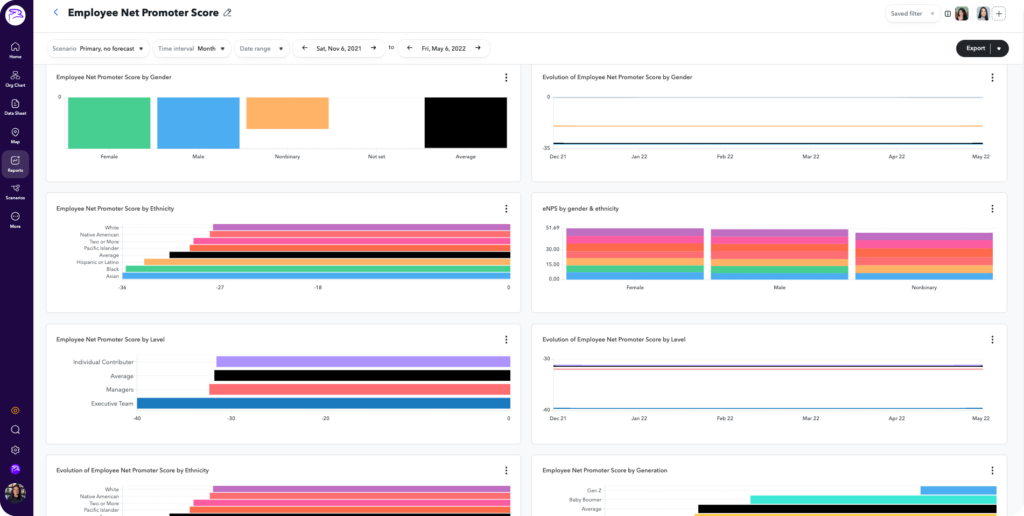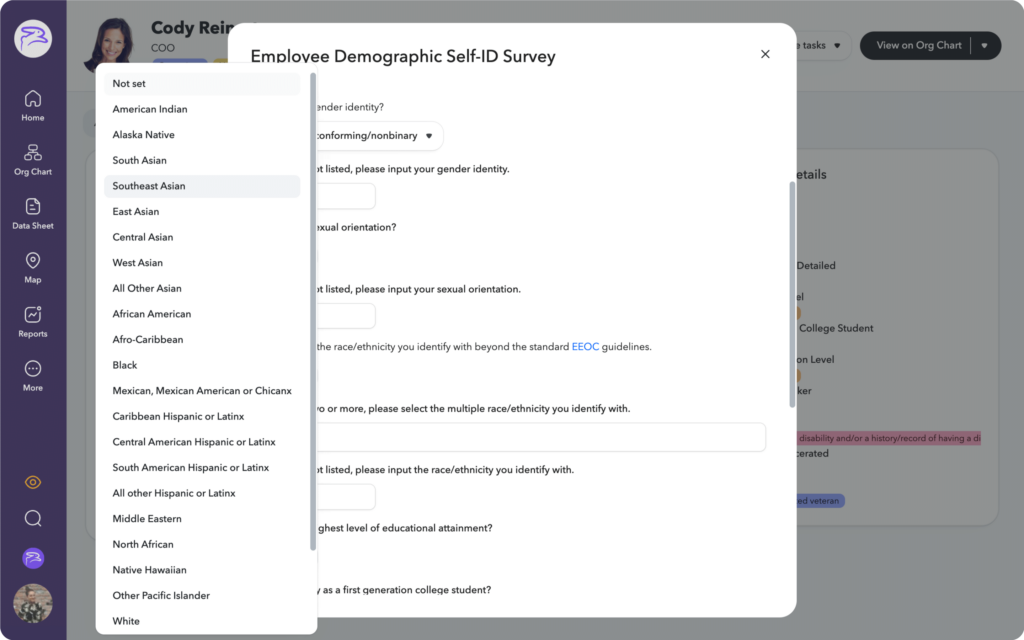
Are your employees struggling at work? If you haven’t surveyed them, then they probably are.
That’s because 77% of people report experiencing employee burnout in their lifetime, and it’s your job as a leader to prevent and respond to workplace fatigue before bigger issues arise (such as disengagement and turnover).
It’s therefore critical to routinely collect feedback to understand how employees are feeling and drive change as needed. Not sure where to start? Below are four survey ideas to glean insights about your employee experience and identify signs of employee burnout.
It’s important to survey your employees to understand how they truly feel about your organization. But there’s also a strategy behind sending surveys: creating them by topic (to avoid long surveys and assessment fatigue), communicating results, and acting on feedback. All should be completed on a regular cadence.
The four surveys below help preemptively attack employee burnout on all sides by focusing on what you can do to better support your people.
One of the most common ways to gauge organizational sentiment is through an eNPS survey.
Based on the same net promoter score that consumer brands use to measure customer loyalty, eNPS scores also rank employee loyalty.
If you’re looking to improve your employee experience and avoid an employee burnout culture, start by deploying the simplest of eNPS surveys, which ask people how likely they are to recommend your organization as a place to work.
To calculate your average eNPS score and set a benchmark, use the following formula:

Responses are recorded on a scale from 1-10, which are then divided into the following categories:
Simply put, the more promoters you have, the better. If you collect mostly passive or detractor-centric responses, you have room for growth.
If the latter is the case, look for signs of employee burnout, such as increased absenteeism, decreased productivity, and uncharacteristic isolation (e.g. an extroverted and collaborative employee withdraws from projects and professional relationships). Then, start planning a stronger employee experience strategy to help accurately and regularly measure and address employee engagement.
And if you want to dig deeper into the strength of your employee experience – such as how people are managing their workloads, how teams are functioning, and how satisfied employees are with their work – include more specific questions in your eNPS survey, like:
Combined with your baseline eNPS ratings, this granular feedback allows you to pinpoint what is holding your people back and how you can help.

A modern people operations platform gives leaders the ability to look at eNPS data across their teams to determine strengths and signs of people struggling at work.
If you want to know where to make improvements across your organization, you need to ask your people explicitly how you can better support them.
Enter the employee pulse survey, in which you deliberately ask your people if they feel supported at work. Consider asking employees:
Note that the support surpasses managerial guidance. While 1:1s between managers and direct reports are productive, they don’t always allow for the most candid feedback, especially if the feedback is about the specific supervisor. Additionally, larger issues surfaced during 1:1s – such as the company having a burnout culture – might be completely out of a manager’s control.
It’s therefore not only best practice to distribute employee pulse surveys routinely, but also to collect results via a people operations platform to help you better understand issues (and track trends over time) that might be affecting the bigger picture. When you’re able to slice and dice your data, you can visualize resource-related gaps that may be affecting the employee experience, including budget, headcount, software pain points, and professional development.
Ideally, functional managers should look at this data as well to identify team-related concerns and advocate for change as needed. Examples include pinpointing large-scale and individualized needs:
It’s no secret that your diversity, equity, inclusion, and belonging (DEIB) initiatives significantly impact your employees’ experiences. Yet, companies are still struggling to create healthy, safe environments for all.
In fact, Gallup found that 24% of black and Hispanic employees, 15% of white employees, and 16% of Asian employees reported experiencing discrimination at work in the past 12 months. Additionally, only around half of surveyed people agreed that their organization had policies in place that supported DEIB.
To understand the impact surrounding your DEIB efforts, you should distribute employee surveys that focus solely on these practices. Ask your employees to rank how the organization values aspects like fairness, representation, inclusion, and transparency. Then, give them the space to elaborate on their responses candidly.
Combining quantitative and qualitative people data not only allows you to identify signs of employee burnout, but also helps you pinpoint trends that impact employees who identify as underrepresented and marginalized. Having the software to drill down into demographic data and DEIB-related metrics can help uncover these trends so managers are equipped to have honest, informed conversations and cultivate an inclusive, equitable employee experience for all of their people.
Additionally, consider deploying a voluntary self-ID campaign that collects different aspects of identity and empowers leaders with a more complete picture of your people. Doing so with a people operations platform makes it easy to collect feedback, filter responses, and pull a report all in one place. The result? Less time sifting through numbers and more time analyzing and planning programming to see those numbers shift in the right direction.
If you want to send out a voluntary self-ID survey of your own, consider core demographics such as:
When you aggregate and analyze these results in a people operations platform, stakeholders can work together to bridge gaps and create more inclusive, equitable initiatives.

A people-first focus will proactively deter a burnout culture. Use voluntary self-ID forms to collect additional information about your people so you can make the best decisions for an inclusive environment.
Employees want to feel valued and know exactly how they fit into the bigger picture. You can add value to their overall experience by helping them understand the larger company mission, how they contribute to corporate goals, and how your organization is structured.
Alternatively, people who don’t feel connected to their work and organization feel like they’re on the hamster wheel – moving along, yet going nowhere. This sentiment, understandably, leads to employee burnout and workplace fatigue.
So how can you make sure your teams and goals are aligned? The first step is sending out an alignment survey that asks employees if they understand how things operate. They don’t need to know the confidential ins-and-outs of the organization, but they should be equipped with the basic, core company insights and understand how they contribute to overall company goals.
The second step in ensuring alignment is equipping employees at all levels with a self-serve hub that grants them access to vital company and career-centric information. Ultimately, you need to empower your employees with the right insights they need to feel connected, inspired, and prepared to do their best work.
Such insights include:
Consider asking:
If you’ve worked hard to align team goals and communications, then your survey results may just validate your foundational structure. However, if individuals or teams don’t feel their work is valued or meaningful, you have the task of creating those connections or revisiting company KPIs.
If you’re not collecting and using your people data, then you’re falling short as a leader. Without timely insights into your employee experience, you may miss signs of employee burnout or, even worse, that your company has a burnout culture.
Therefore, it’s best practice to survey your people routinely to understand their experiences throughout the employee lifecycle. And when you can visualize the results alongside other metrics, you’ll be better equipped to note issues and identify potential risks among your people.
Ultimately, your employees want to know their opinions matter and that you care about their well being. By instituting a regular cadence of employee surveys, you can combat employee burnout and support those who are struggling at work.
Sign up for a free demo today.